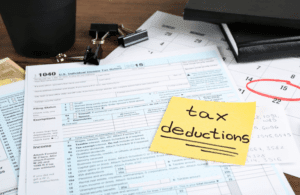
Contingent liabilities are recorded on the balance sheet only if the conditional event is likely to occur and the liability can be reasonably estimated. Based on the outcome of the underlying event that is set to occur in the future, the financial obligation can be “triggered” and cause the company to be held accountable to issue a conditional payment (or fee). A probable contingent liability that can be reasonably estimated is entered into the accounts even if the precise amount cannot be known. Here, Rey Co would capitalise the $170m as part of property, plant and equipment.
Why is a Contingent Liability Recorded?

This narrative gives context to the numbers and helps users of the financial statements to understand the potential magnitude and timing of the liabilities. For example, a company involved in litigation would disclose the nature of the claims, the progress of the case, and the opinions of legal counsel. These obligations are not recorded on the balance sheet as definite liabilities but are noted in the financial statements to inform stakeholders of possible risks. The nature of contingent liabilities makes them a subject of interest for analysts who seek to understand the full scope of a company’s financial responsibilities. For example, environmental liabilities may not be immediate but can represent significant future costs related to cleanup or remediation efforts. If a loss from a contingent liability is reasonably possible but not probable, it should be recorded as a disclosure in the footnotes to the financial statements.
What is your risk tolerance?
The table below shows the treatment for an entity depending on the likelihood of an item happening. Contingent liabilities are recorded to ensure the financial statements fully reflect the true position of the company at the time of the balance sheet date. Because a contingent liability has the ability to negatively impact a company’s net assets and future profitability, it should be disclosed to financial statement users if it is likely to occur.
Related IFRS Standards
It is not sufficient for the obligation to be a possible outcome; there must be a present responsibility that will likely necessitate an outflow of resources. For example, a company that has used a hazardous substance in its operations may have a present obligation to remediate any damage caused, even if the remediation has not yet occurred. ABC Company’s legal team believes the chance of a negative outcome for ABC is probable.

Types of Contingent Liability
In order to safeguard your company’s finances and reputation, you must take both existing and potential obligations into consideration when you engage into a contract. The most basic example of a contingent liability is a pending lawsuit from a previous event. For example, a hang gliding manufacturer could be sued because their equipment was faulted and caused serious injuries to a small https://www.bookstime.com/ number of their customers. There is no way to know the outcome of the lawsuit or even when the suit will be settled. A provision is measured at the amount that the entity would rationally pay to settle the obligation at the end of the reporting period or to transfer it to a third party at that time. Professional judgment plays a significant role in measuring contingent liabilities.
- That said, there can be a variety of techniques to use to help evaluate contingent liabilities and weigh their risk.
- Record a contingent liability when it is probable that a loss will occur, and you can reasonably estimate the amount of the loss.
- It is not uncommon for candidates to incorrectly take the $12m, thinking that the worst-case scenario should be provided for.
- Contingent liabilities also can negatively affect share price, depending on the probability of the event and other factors.
Translations of the updated educational material on applying IFRSs to climate-related matters
- Contingent liabilities are potential liabilities that have a possibility of occurring sometime in the future.
- So if a company has a strong cash flow position and can experience rapid growth earnings, it can probably avoid the impact being too large.
- Grant Gullekson is a CPA with over a decade of experience working with small owner/operated corporations, entrepreneurs, and tradespeople.
- Some common examples of contingent liabilities are pending lawsuits and product warranties because each scenario is characterized by uncertainty, yet still poses a credible threat.
- If the contingent loss is deemed remote—specifically, with less than a 50% probability of occurrence under IFRS—the formal disclosure and recognition on the balance sheet is not necessary.
- Using historical averages, it estimates that 5% of those, or 500 vacuums will be returned under warranty per year.
Contingent liabilities are potential obligations that may arise depending on the outcome of a future event. These liabilities are not certain; they are conditional and dependent on situations that have not yet occurred or been resolved. For instance, a company facing litigation may have a contingent liability if the lawsuit could potentially result in a financial loss. Similarly, a business that has issued warranties on its products carries contingent liabilities, as it may have to honor these warranties in the future.
Deloitte comment letter on tentative agenda decision on negative low emission vehicle credits

They can range from lawsuits to loan guarantees, and their impact can be substantial if not managed properly. Gain insight into the role of contingent liabilities in financial health, including recognition, measurement, and reporting practices for informed decisions. Banks that issue standby letters contingent liabilities meaning of credit or similar obligations carry contingent liabilities. All creditors, not just banks, carry contingent liabilities equal to the amount of receivables on their books. In all these situations, a past event has occurred that may give rise to liability depending on some future event.

A contingent liability has to be recorded if the contingency is likely and the amount of the liability can be reasonably estimated. Both generally accepted accounting principles (GAAP) and International Financial Reporting Standards (IFRS) require companies to record contingent liabilities. Contingent liabilities are recorded if the contingency is likely and the amount of the liability can be reasonably estimated.

What is the debit entry?
- A contingent liability is an existing condition or set of circumstances involving uncertainty regarding possible business loss, according to guidelines from the Financial Accounting Standards Board (FASB).
- Contingent assets are possible assets whose existence will be confirmed by the occurrence or non-occurrence of uncertain future events that are not wholly within the control of the entity.
- A business with high contingent liabilities may be seen as riskier, which could influence its borrowing costs and credit rating.
- All creditors, not just banks, carry contingent liabilities equal to the amount of receivables on their books.
- This adjustment can materially affect the valuation of a company, highlighting the importance of thorough analysis and accurate disclosure.
- Again, a description of the event should be recorded in addition to any potential amount.
If the firm determines that the likelihood of the liability occurring is remote, the company does not need to disclose the potential liability. Similarly, the evaluation of contingent assets is a continuous process, ensuring that any developments are accurately represented in the financial statements. If it becomes virtually certain that there will be an inflow of economic benefits, the corresponding asset and related income are to be recognised in the period in which this certainty arises. Moreover, if the likelihood of an economic benefit inflow increases to the level of probability, the entity is required to disclose the contingent asset (IAS 37.35). If the likelihood of resource inflow exceeds 50%, contingent assets are disclosed in the notes to financial statements (as per IAS 37.89) but aren’t recognised in the primary financial statements.

 Get You Welcome Bonus – 689
Get You Welcome Bonus – 689
Commentaires récents